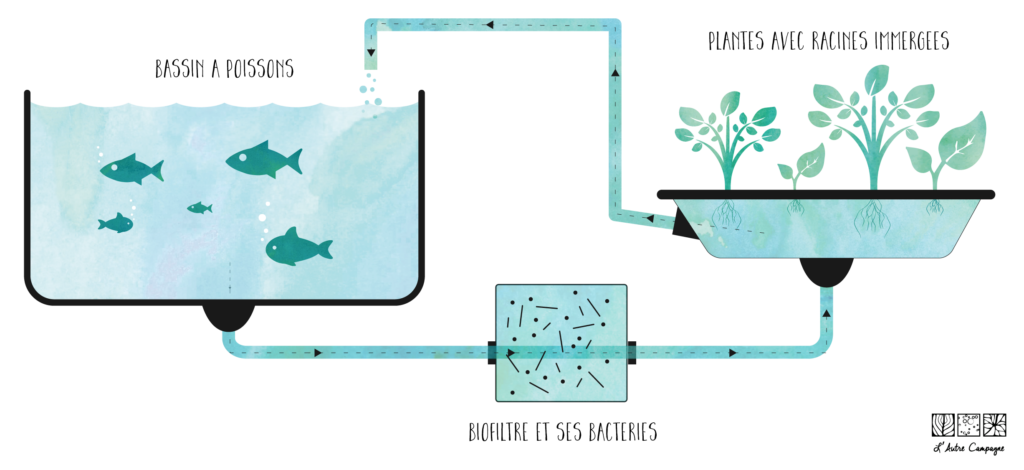Aquaponics
Aquaponics is the union of aquaculture (breeding aquatic organisms) and hydroponics (growing plants in an enriched substrate). In theory, it’s a virtuous system in which the waste generated by the fish is used as fertilizer for the plants, which in turn act as a biological filter, purifying the water from the effluent generated by the fish.
With this project, our aim is to establish a reliable aquaponics system whose data is measurable and comparable with hydroponics or open-ground cultivation. We hope then to be able to determine to what extent aquaponics can be of interest in the city.

Advantages
Optimum space efficiency
Based on existing experience around the world, food productivity of up to 250 kg per year per square metre has been achieved.
Low water consumption
Compared with open-ground cultivation, aquaponics saves over 80% in water consumption. This is because the water is in a closed cycle.
Virtually zero discharge of pollutants
The treatment of fecal waste in conventional aquaculture is a real scourge that is still little considered. According to Beth Hunter, coordinator of Greenpeace’s Oceans campaign, a farm of 200,000 salmon releases a quantity of faecal matter « as large as the nutrients discharged in the sewage of a town of 65,000 people ».
No external chemical inputs
This is a small eco-system that is highly sensitive to any external input; only organic fertilizers tolerated in organic farming can be used, and then only sparingly.
Preservation of local fauna
Raising fish in enclosed pens, as in the aquaponics model, avoids the risk of contamination of the wild environment.
Adaptability of structures
An aquaponics system can be adapted to any space constraints: roofs, parking lots, balconies, sidewalks… all these sterile spaces can be redesigned to accommodate aquaponics.
An Aquaponics Greenhouse on the UNIL-EPFL Campus
Steps already taken :
1. Preparation of the technical file for the installation of the greenhouse on the Campus.
2. UNIL’s agreement to install the greenhouse on its site.
3. Collaboration with the Urban Exodus Committee in Geneva.
4. U-Change prize awarded to finance project.
5. Visit to MyFood greenhouses in Alsace
Next steps :
1. Get the green light from the municipality to install the greenhouse
2. Set up the Aquaponics Committee
3. Study and understand the aquaponics cycle
4. Comparison of hydroponics / aquaponics production and publication of a study

